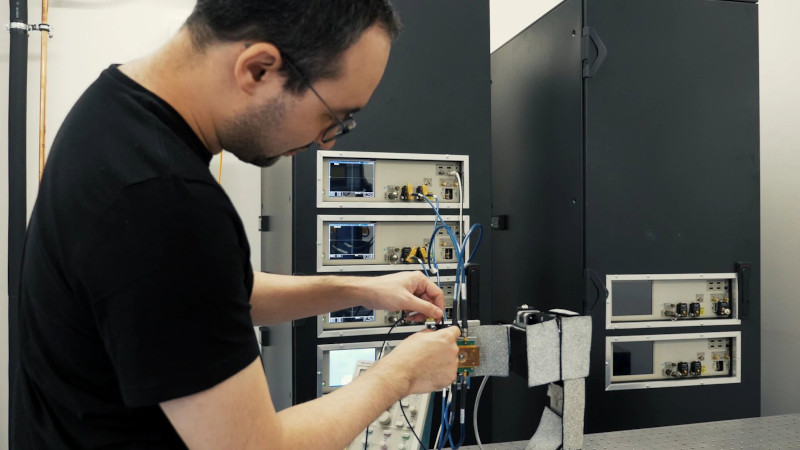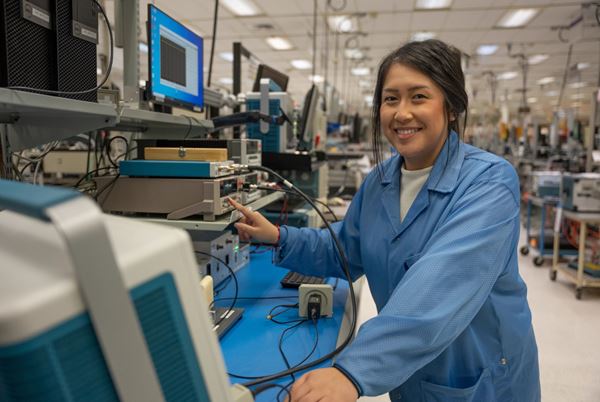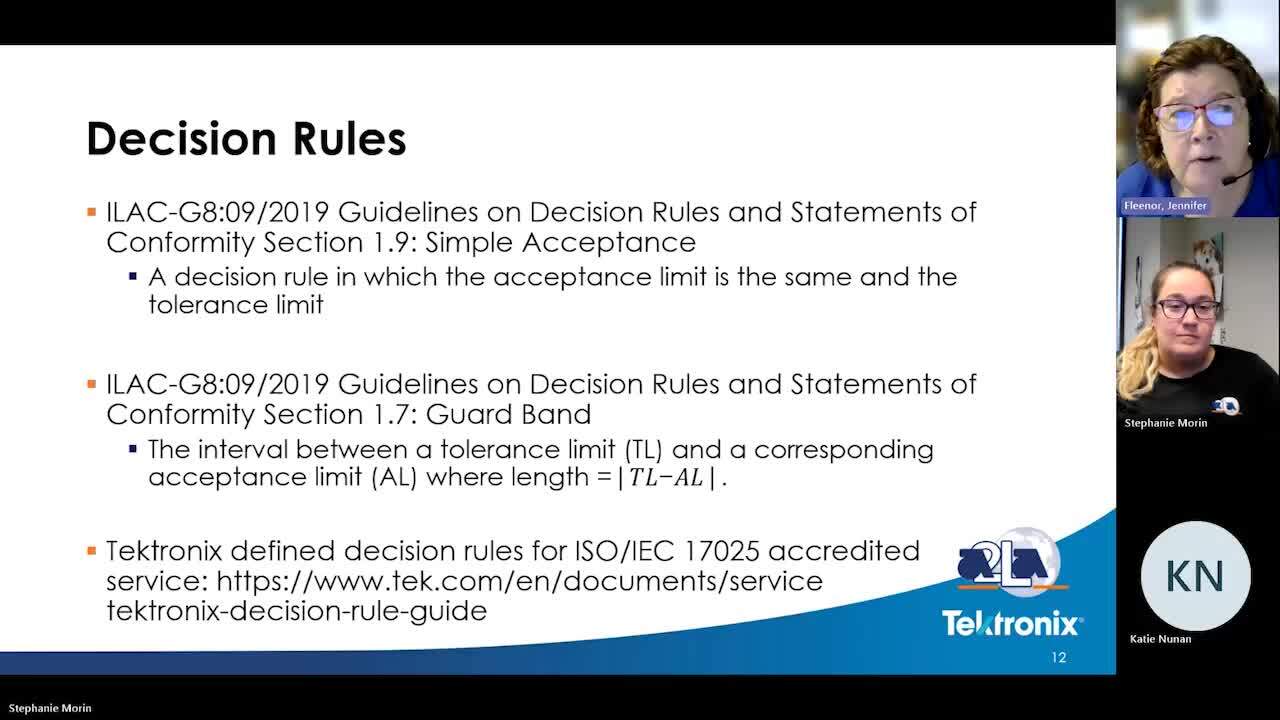

At Tektronix, we understand that accuracy and consistency in communication between calibration providers and customers is essential to the success of calibration processes. Knowing this, I recently had the privilege of discussing, alongside Stephanie Morin of A2LA, crucial topics in the realm of calibration during our recent webinar, also featured below. Our discussion's objective was to break down common industry terms, identify communication gaps, and show how these barriers can be dissolved through cooperation of all involved parties.
Speaking the Same Calibration Language
Stephanie and I began by discussing the importance of everyone in the calibration process speaking the same language and understanding key industry-specific terminologies. Miscommunication or misunderstanding of terms like "NIST Traceable" or "ISO/IEC 17025" could lead to complications later in the process. These include non-conformities during third-party audits or challenges in maintaining traceability.

NIST Traceable & Accredited Calibration
We discussed that while any laboratory can claim that their calibrations are traceable to, or through, the National Institute of Standards and Technology (NIST), traceability is achieved to the International System of Units (SI) through a National Metrology Institute (NMI), such as NIST.
I also pointed out the potential confusion that can arise when clients don't clearly specify what calibration service level they need, such as a calibration in compliance with ISO/IEC 17025 but not necessarily an accredited one. Calibration providers may offer various service levels, from standard calibrations to ISO/IEC 17025 accredited calibrations. Here is an example of the calibration service levels offered by Tektronix. Customers must specify their requirements. We suggested that customers clearly state their requirements during the contract review process. Accredited laboratories undergo third-party assessment, ensuring traceability and compliance with ISO/IEC 17025. Non-accredited labs lack this third-party confirmation.
Calibration Decision Rules
Stephanie rightly pointed out that customers need to define which decision rules they prefer. The decision rule is a mechanism for considering measurement uncertainty that will be included in the statement of conformity. Different decision rules like ILAC G8 (International Laboratory Accreditation Cooperation) "simple acceptance" or "guard banding" may be used, but the decision rule selection should be communicated and agreed upon in advance of work starting to ensure agreement between parties. As an example, these are the standard decision rules that Tektronix offers to calibration service customers.

Calibration Vs. Adjustments & Verifications
Stephanie and I touched on a few other notable points of potential misunderstanding in the calibration process, such as clarifying what "calibration" means versus statements of "adjustment". Calibration is a comparison with associated measurement uncertainties, while adjustment ensures the calibrated item functions as intended. Clear communication about the need or request for adjustment is crucial. Another frequent point of miscommunication is the distinction between “verification” and “calibration”. Verification checks if equipment meets requirements without a traceable reference, while calibration involves a comparison with associated measurement uncertainties. They serve different purposes.
We emphasized the shared responsibilities of customers and calibration providers. The contract review process is crucial for ironing out details, such as specific methods, measurement uncertainty, and adherence to standards. Clear requests for work during the contract review process mitigate the need for rework, leading to satisfied customers and calibration laboratories.
Conclusion
In conclusion, we emphasized the paramount importance of clear, cohesive communication between all the parties involved in calibration services. Better communication promotes a better understanding of customer needs, making the process more efficient and effective and leading to more successful outcomes. Whether you are a calibration provider, customer, or somewhere in between, investing time in good communication practices and a strong understanding of industry terminology and practices will pay dividends.
I hope this blog provides valuable insights into the world of calibration communication. Remember, effective communication paves the way for successful calibration!
Learn more about Tektronix Calibration Services



